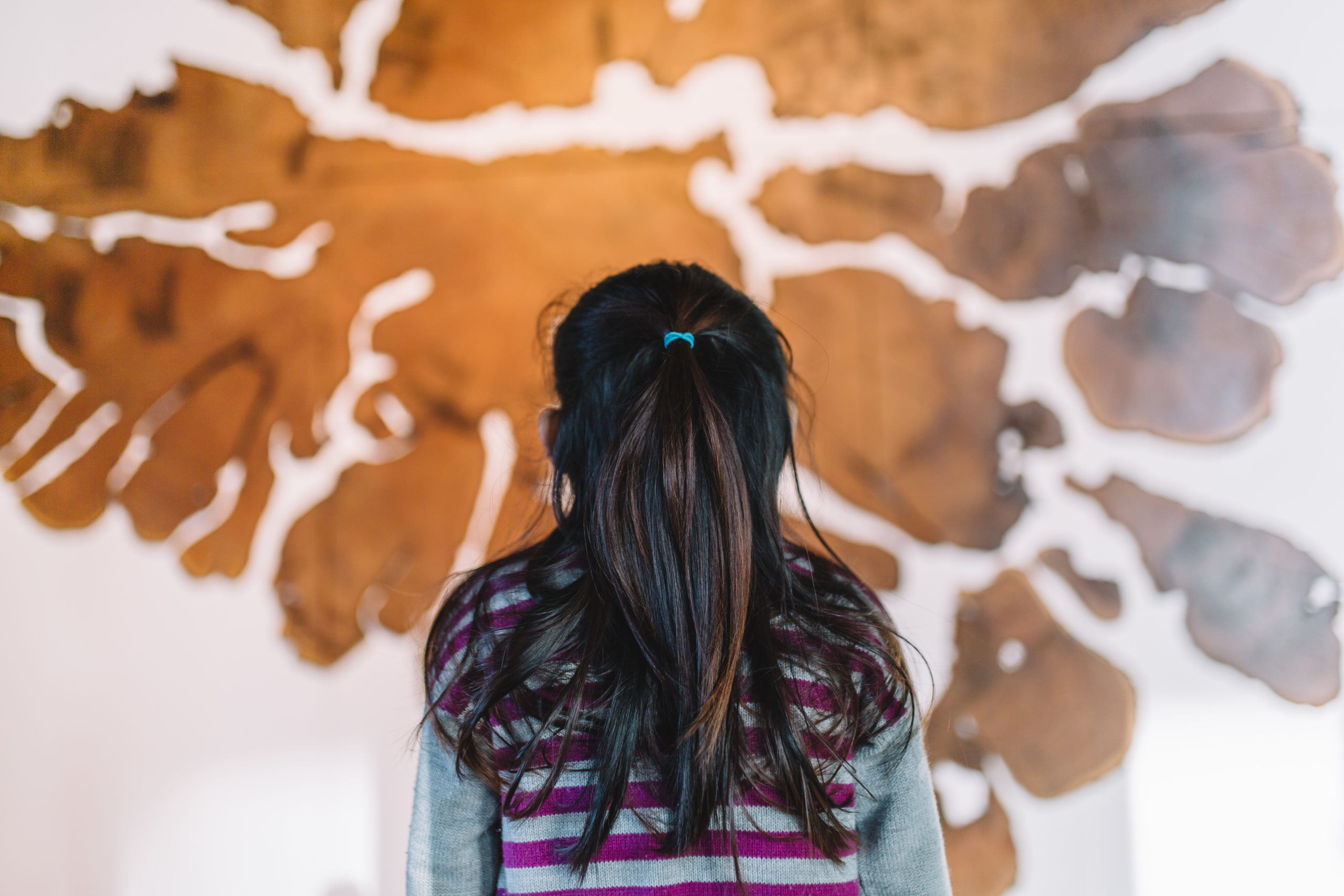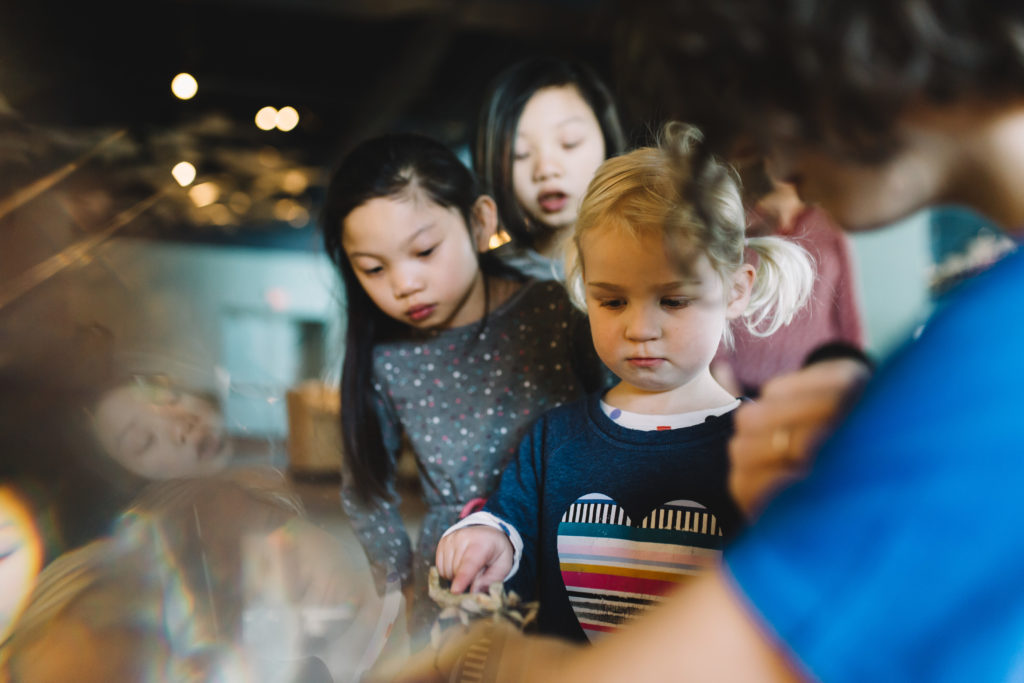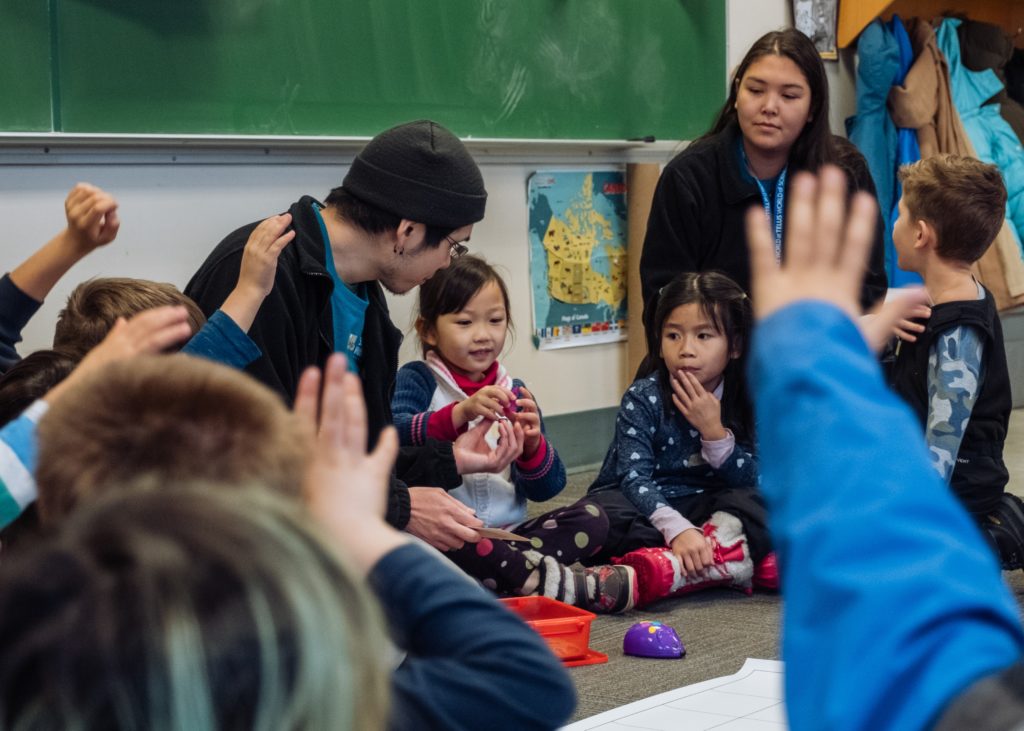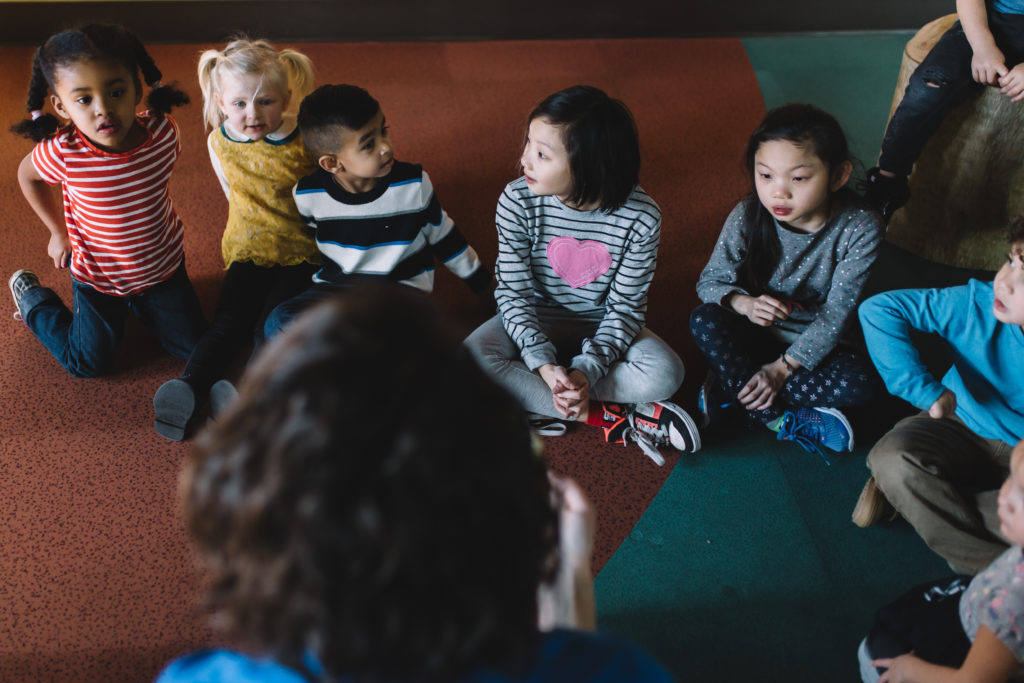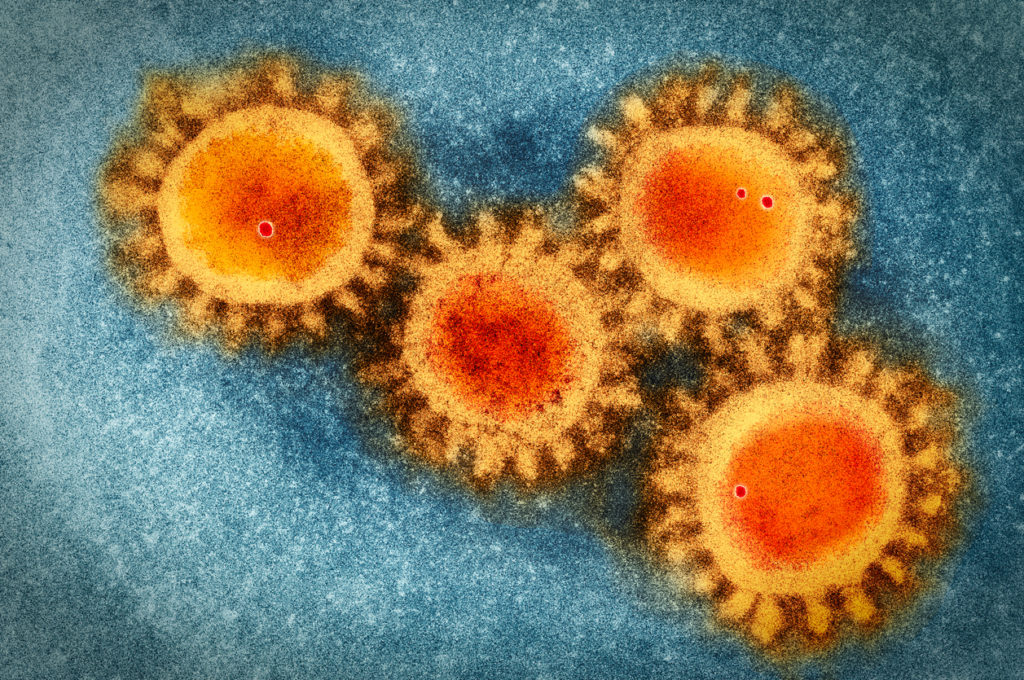The Greatest Asset
Christine says Science World's greatest asset is the multifaceted experience of its staff: “If I don’t have the answer, I can find someone who does.”
An internal directory lists staff members and their expertise, from Atmospheric Science to Vexillology. Christine references this when she gets questions from the public that fall outside her wheelhouse.
“We’ve helped a grandmother
explain quantum computing to her grade-five grandson. We field mathematics
questions from students every school year. We helped a little girl understand
why insect wings are clear.”
And to find out why spiders have eight legs? Christine guides Violette back to the very beginning, to the oldest arthropod of all: the trilobite, and its modern equivalent, the horseshoe crab, an indestructible creature that has survived three of Earth's major extinction events.
Last year, scientists discovered that the horseshoe crab is actually more closely related to a spider. And this is a key point of entry where Violette can begin her investigation.
Christine reviews her introduction to ensure it makes “Violette-level” sense. “Which is not about simplifying the science,” she clarifies. “It’s about explaining any terms that might be new.”
“What I’m hoping is for her to speculate about spider webs and to wonder what happens if a spider loses a leg or two. I’m hoping it has her looking at adaptations of all kinds of insects and noticing how a number of their appendages developed into wings. While the spiders’ appendages did not. Which many people are very, very happy about!”
Igniting Wonder From Afar
Despite the COVID-19 closure, Christine will continue to deliver on Science World’s mandate to communicate science to the public, an act that can be vital for many people during times like these.
For Christine, these correspondences help make up for the fact that the dome is empty.
“I miss the public. I miss visiting a gallery to have a conversation with a three-year-old on my coffee break. I miss watching 8th graders competing to see who can jump high enough to hit the basketball height zone.”
When it's ready, Christine sends her introduction to “Why do spiders have eight legs?” to Violette’s father. He will translate it for his daughter into French.
He’s a high-level atomic particle physicist who has told Christine that, despite his advanced science degrees, he “knows nothing about the squishy things.”
After a moment, he replies, “This should keep Violette occupied for many hours, if not days.”
Which is exactly what Christine was hoping to hear.
The Dome is Where the Heart is.
For the first time in over 30 years, Science World has closed its doors to the public. Every day, COVID-19 is eliminating our main revenue source and critical operating funds. We rely on donations and partners to run our vital programs. Give now to ensure that when the virus is gone, Science World is still igniting wonder and empowering dreams.
